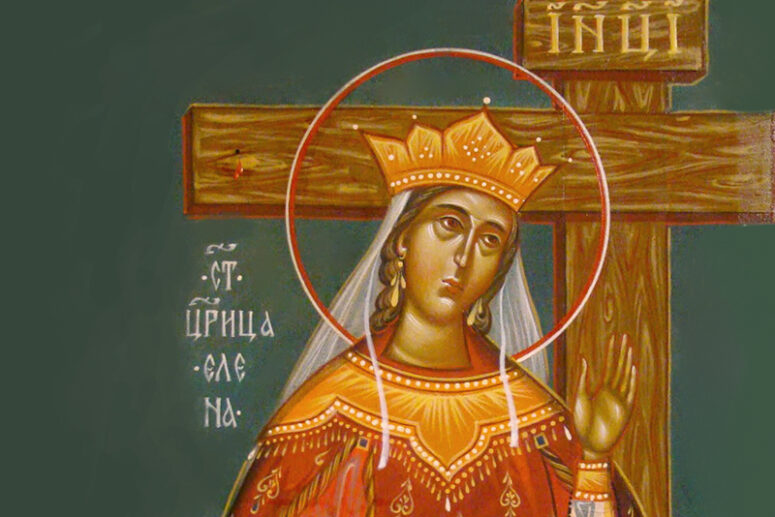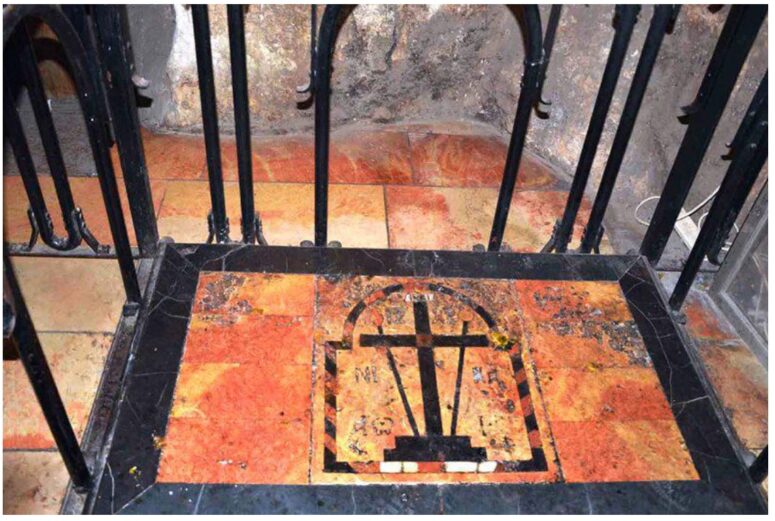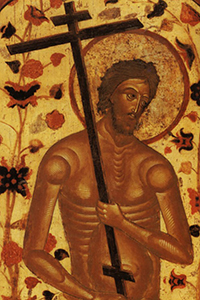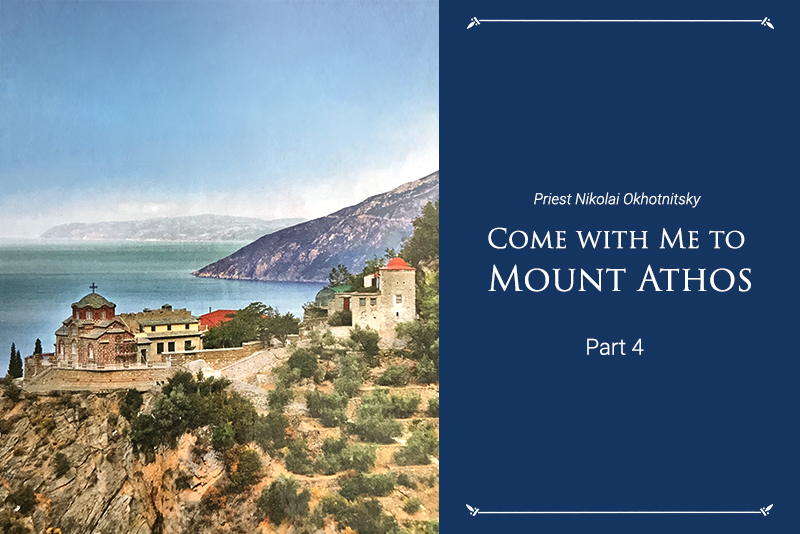
What Happened to the Cross after the Crucifixion?
A long staircase leads today’s pilgrims down to the Church of the Holy Queen Helena built in the place where the True Cross was found. Today it is a side altar of the Church of the Holy Sepulcher and belongs to the Armenian Church. The very place where the Cross was found is marked with a reddish marble slab.
Why is this place so deep below ground and much lower than the floor in the tomb of Christ? According to legend, there was an old quarry near Calvary previously used for mining stone for building houses and paving streets in the city. This quarry (or rather the old water cistern carved into its rock bottom) was where the Romans threw the heavy crosses together with the nails and the tablet.
Calvary was a permanent place of execution, and it was not the first time that the Roman soldiers did this. After the crucifixion of Christ, executions continued here for about forty more years, until the fall of Jerusalem in 70. If we try to realistically imagine the whole picture of the excavation, it would be a huge pit with many logs, not resembling crosses in any way, since the vertical pillars of the crosses were used several times.
How was it possible to find the three crosses that the hagiographic literature tells us about?


The Three Crosses
The Roman soldiers dealt very unceremoniously with the sentenced prisoners throwing their bodies down into the quarry together with the crossbars, to which their hands were nailed. As we know from the Gospel, the rich and influential man Joseph of Arimathea, together with a member of the Sanhedrin Nicodemus had to get an appointment with the ruler to obtain the body of Christ. It was then washed, anointed with fragrant oils, carefully prepared for burial and placed in a rich tomb. Taking advantage of the situation, Joseph and Nicodemus piously removed the other two crucified prisoners from their crosses in fulfilment of the Jewish law. In all likelihood, these were the only three crossbeams without bodies found by the expedition.
The Nails
The archaeological expedition of Queen Helena found four nails (or perhaps two, if the vertical pillar was left at the place of execution). They were identified as nails from the True Cross of the Lord. How did that become clear and why weren’t these nails lost among hundreds of others?
Long bronze crucifix nails were bent tightly on the reverse side of the cross, leaving no way for the crucified person to free himself from the cross, or to take them out after the execution. “Let him come down from the cross now, and we will believe in him” (Matthew 27:42). The Jews were mocking the Crucified, realizing that this was impossible. All the nails remained in the wood and were carefully removed by Queen Helena, when it became clear on which of the crosses Christ was crucified.
Crosses of the Two Thieves

According to legend, the True Cross was brought near a deceased person, making him rise again. The archaeologists then began to argue which of the two remaining crosses belonged to the repentant thief, honored by the church as a saint and the first man to enter paradise. These disputes resulted in nothing, so both crosses were divided in half and new crosses were made to make sure that a half of each cross belonged to the repentant thief.
The queen sent one of the two crosses to Cyprus, inserting a nail from the True Cross into it. According to legend, a drought immediately ended on the island after the cross was received there. The rest of the nails (or one remaining nail) and the second robber’s cross she sent to Constantinople together with a small part of the True Cross. The queen placed the main part of the Cross in a silver ark and handed it over to the Jerusalem patriarch with the instruction to preserve it for future generations.
How did the Cross Fit into the Ark?
The mention of the ark is another argument in favor of the idea that only the crossbar of the True Cross was found. The queen detached a part of it to take it to the capital of the Byzantine Empire and the spiritual center of Christianity at that time. The remaining part was small enough to make the idea to put it in an ark for storage quite natural.
Today, only a modest fragment of the Cross is kept in the Church of the Holy Sepulcher. Pilgrims can venerate it in the cave under Mount Golgotha, where, under the glass, there are also particles of relics of saints and the alleged head of Adam.
Where has the Shrine Disappeared?
The Jerusalem Cross was carefully guarded (a dedicated position existed called the keeper of the Cross), and yet it did not escape kidnapping. During the raid of the Persian king Chosroes II in 614, it was taken to Persia, where it stayed until 628, when it was returned to the Byzantians in exchange for their promise to help in the Persian internal turmoil. However, after 10 years, in 638, Jerusalem surrendered to the Arab army. The defenders of the Church of the Holy Sepulcher fled to Byzantium, trying to take away all the shrines with them. Despite the strict prohibition to fracture the Cross, there was no other way to discreetly evacuate the shrine.
In a more peaceful time, one part was returned to Jerusalem. The need to protect it became the reason for the crusades, now known to every schoolchild from history textbooks. Despite all the efforts of the Crusaders, the Jerusalem part was lost in the 12th century Battle of Hattin. Frank Ernul, a participant in the battle, reports that the templar who took the shrine out of the temple buried it in the heat of the battle to hide it, and then he could not remember where exactly.
The Constantinople part of the Cross was stolen in 1204 by the crusaders who attacked Byzantium. It was fractured to become the source for many particles of the Life-giving Cross in Western Europe.
True Cross of Christ in Russia
The Polotsk princess Euphrosyne brought a particle of the Cross and other relics from Jerusalem in the 12th century. The shrine was placed in a reliquary known as the “Ark of Dionysius”, which has since been inherited by the Moscow princes. The ark with a particle of the Cross was one of the main shrines of the Annunciation Cathedral between the 17th and the early 20th centuries. Today it is kept in the Moscow Kremlin Museum.

The second known shrine was the Kiy cross, a reliquary made in the 17th century, containing, besides a particle of the Life-giving Cross, 108 particles of relics of saints and 16 stones from the sites of biblical events. Today it is kept in the church of St Sergius of Radonezh in Krapivniki (Moscow).

Despite the loss of the main part of the shrine, there are still many known particles of the Cross in the world. According to scientists, their total weight is about 1.7 kilograms.
Some researchers believe that most of the particles are in Ukraine and Russia. From the early 19th century, eminent Russian pilgrims to the Holy Land have received from the Patriarch of Jerusalem particles of the True Cross as a blessing, and later as a reward.

To this day, the Order of the True Cross with a particle of the True Life-giving Cross is the highest award of the Jerusalem Church. It becomes more and more honorable every year, as the fragment of the True Cross kept in Jerusalem depletes.
Translated by The Catalogue of Good Deeds
Source: http://gorlovka-eparhia.com.ua/krest-gospoden-istoriya-poter-i-obreteniya-1/




